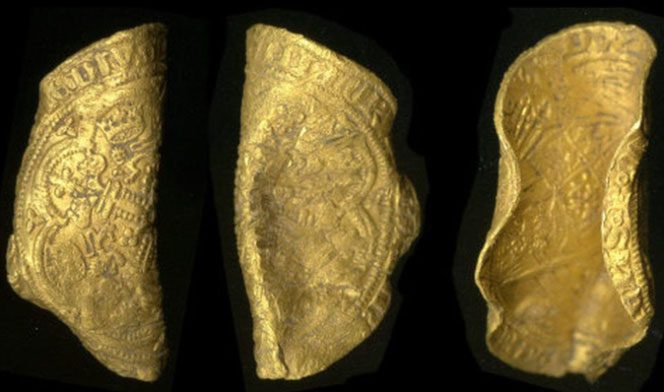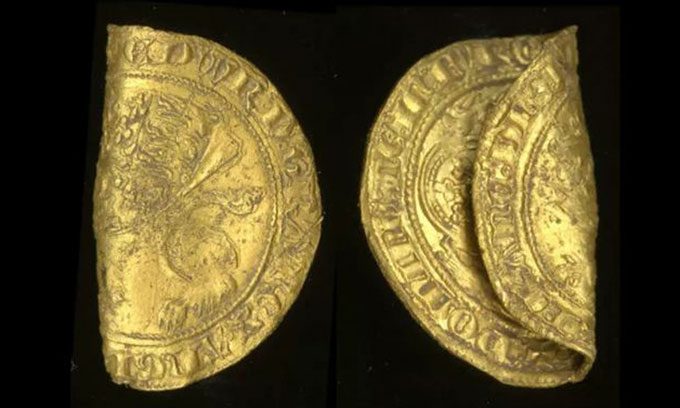Two gold coins minted nearly 700 years ago were considered a “failure” due to their high denomination and lack of acceptance by people at the time.
Metal detectorists discovered two rare coins in Norfolk, England, dating back to the period when the country was plagued by the Black Death, Live Science reported on June 23. They were minted during the reign of King Edward III, who attempted to introduce a new gold coinage system in England in 1344.

Gold noble coin photographed from various angles. (Image: British Museum/CC BY 2.0).
One of the two coins is called the leopard, issued from January to July 1344. The leopard was deemed a failure due to its high minting cost and its denomination being higher than the actual value of the gold. King Edward III attempted to rectify this by issuing a new type of coin from July 1344 until 1351. The second coin found in Norfolk, known as the gold noble, weighs nearly 0.3 ounces (7.7 grams), more than double the weight of the leopard coin at 0.12 ounces (3.5 grams).
Metal detectorists found the leopard and gold noble coins in October 2019, but it wasn’t until now that archaeologists from the Portable Antiquities Scheme (PAS) completed their assessment. They proposed two possibilities for why the coins were found together underground: either the owner lost a money pouch or was secretly hoarding them. Both gold coins were bent but remained relatively intact, showing only some scratches that might have been caused by agricultural activities.

The rare leopard coin issued during the reign of King Edward III. (Image: CC BY 2.0).
The leopard coin contains 96% pure gold. Its discovery is particularly noteworthy because the number of leopard coins minted was limited, and very few exist today, according to Helen Geake, an expert at PAS. Currently, only three leopard coins are on display in public museums.
The owner of the two gold coins in Norfolk was likely from the upper class, Geake noted. Their value at the time would be equivalent to approximately $16,700 today.
After the Norman invasion in the 11th century, the only currency used in England was silver. “Edward III decided to reintroduce gold coins in England for the first time since the Anglo-Saxon period – and no one knows the exact reason,” Geake stated. However, Edward III’s new coins were not well received, possibly due to their high denomination.
The new findings suggest that the leopard circulated longer than scientists previously thought. This may be attributed to the impact of the Black Death in England during the late 1340s, which resulted in the deaths of at least one-third of the population and kept the authorities preoccupied, Geake mentioned.


















































